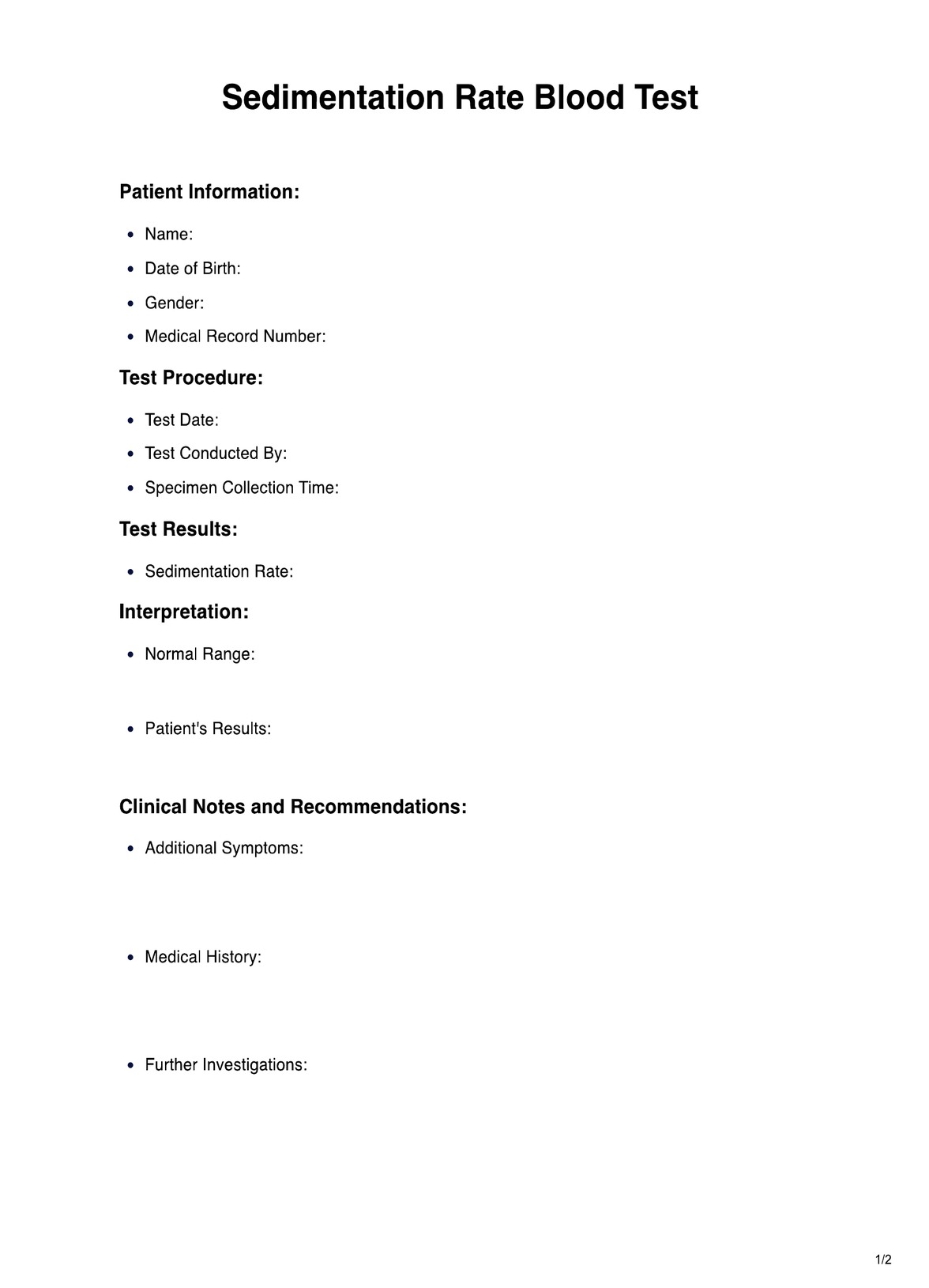A higher Sedimentation Rate typically suggests increased inflammation, indicating various conditions like infections, autoimmune diseases, or certain cancers.

Evaluate inflammation & health with a Sedimentation Rate Blood Test. Understand conditions via this diagnostic tool for better healthcare insights.
A higher Sedimentation Rate typically suggests increased inflammation, indicating various conditions like infections, autoimmune diseases, or certain cancers.
A blood sample is collected and placed in a tube. The rate at which the red blood cells fall and settle is millimeters per hour (mm/hr).
Normal values vary by age and gender. Generally, for adults, normal rates are lower than 20 mm/hr for men and 30 mm/hr for women.
EHR and practice management software
*No credit card required
Free
$0/usd
Unlimited clients
Telehealth
1GB of storage
Client portal text
Automated billing and online payments